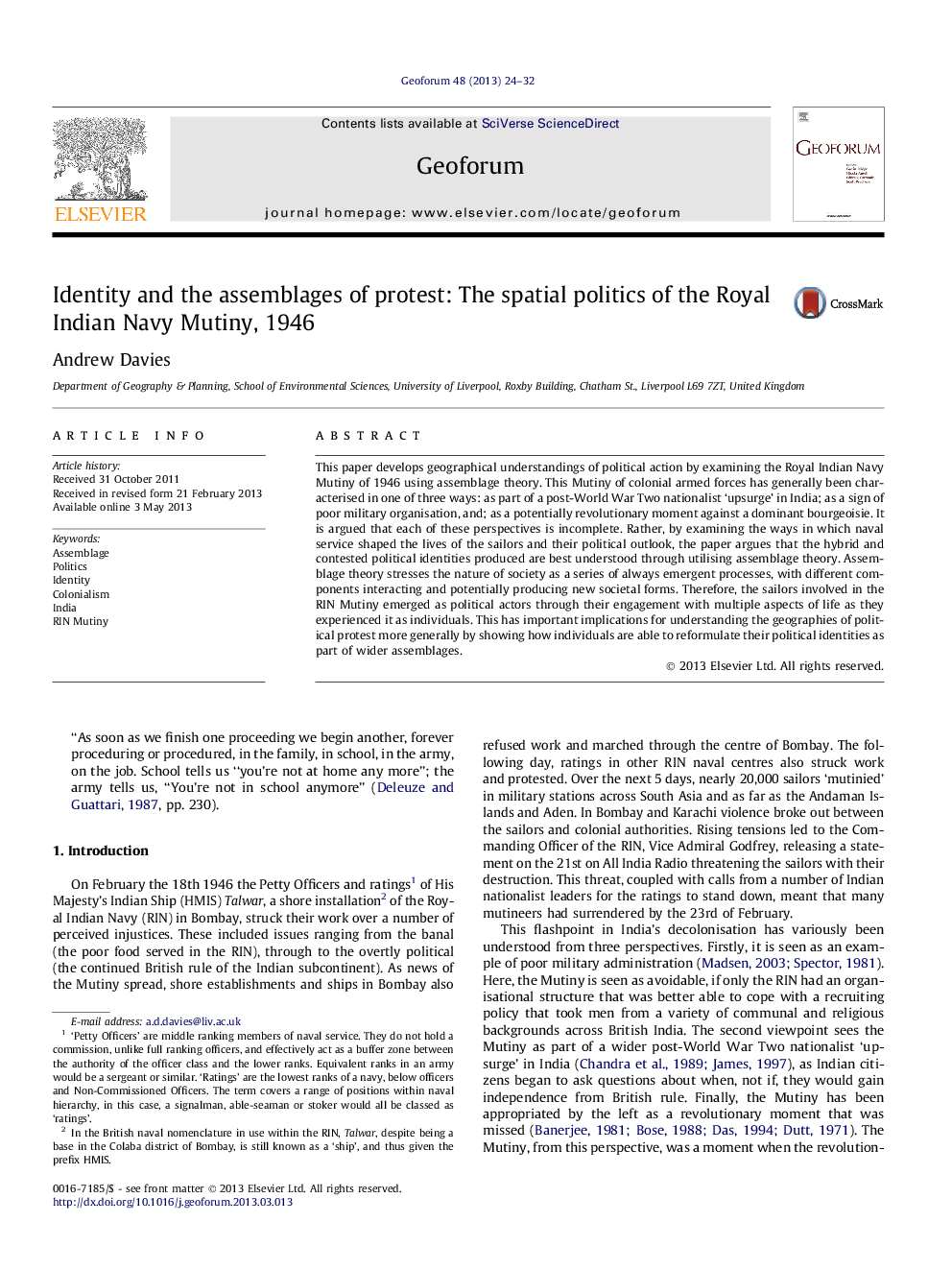| Article ID | Journal | Published Year | Pages | File Type |
|---|---|---|---|---|
| 5074240 | Geoforum | 2013 | 9 Pages |
â¢Examines the political geography of the Royal Indian Navy Mutiny, 1946.â¢Develops previous analyses of this event by using assemblage theory.â¢Assemblage recognises the process-based nature of identity creation.â¢It is argued that this approach allows the sailors to take a central place as political actors.â¢This is important for understanding how individuals take part in political activities.
This paper develops geographical understandings of political action by examining the Royal Indian Navy Mutiny of 1946 using assemblage theory. This Mutiny of colonial armed forces has generally been characterised in one of three ways: as part of a post-World War Two nationalist 'upsurge' in India; as a sign of poor military organisation, and; as a potentially revolutionary moment against a dominant bourgeoisie. It is argued that each of these perspectives is incomplete. Rather, by examining the ways in which naval service shaped the lives of the sailors and their political outlook, the paper argues that the hybrid and contested political identities produced are best understood through utilising assemblage theory. Assemblage theory stresses the nature of society as a series of always emergent processes, with different components interacting and potentially producing new societal forms. Therefore, the sailors involved in the RIN Mutiny emerged as political actors through their engagement with multiple aspects of life as they experienced it as individuals. This has important implications for understanding the geographies of political protest more generally by showing how individuals are able to reformulate their political identities as part of wider assemblages.
